Running a restaurant is tough, especially when it comes to having strong control over your revenue.
With an industry with notoriously tight profit margins, getting your revenue management wrong can lead to big problems, and you can potentially end up not having enough to keep things running.
That’s why this article is here to help.
We’ll look at six essential tips to manage your restaurant’s finances better. From smart ways to handle bookings, menu and inventory tips, to staff optimization, we’ve got you covered.
These tips are all about making more money and optimizing costs wherever you can.
Ready to turn your restaurant’s finances around? Let's dive in and see how you can make your business more profitable.
Introduce Online Table Bookings
Let’s talk about online bookings—a crucial strategy in modern restaurant revenue management.
In the restaurant business, the key to revenue is filling tables. It's a simple concept: the more patrons you serve, the better.
However, figuring out how to attract more customers doesn't have a straightforward solution.
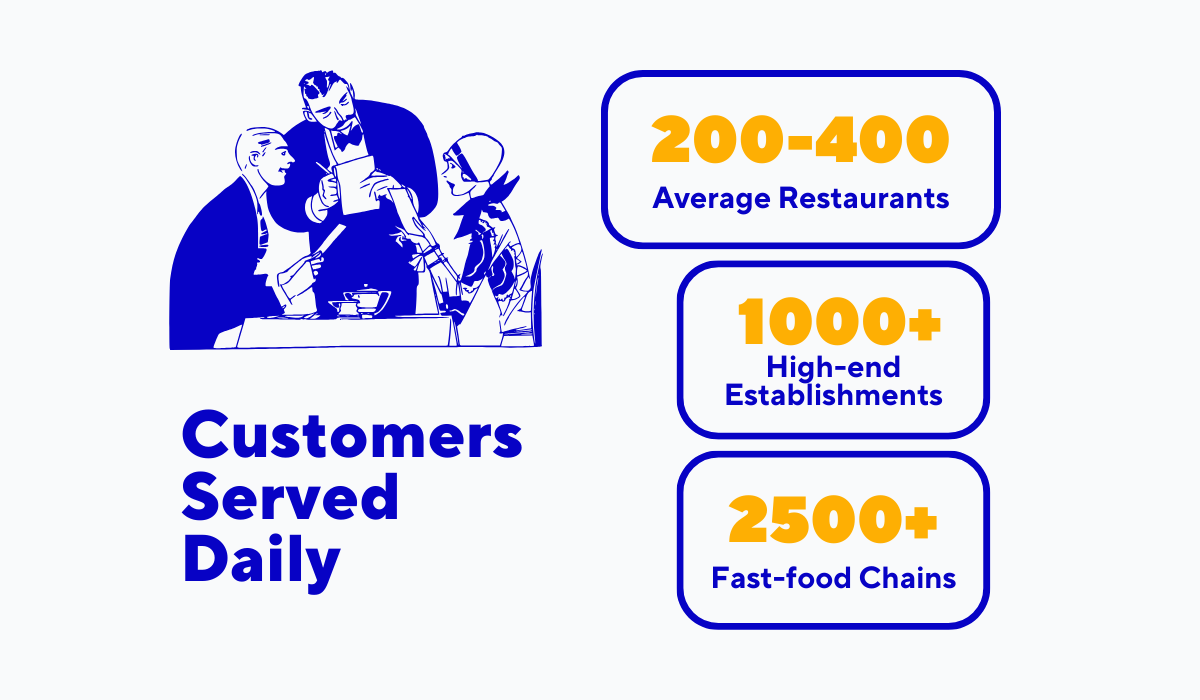
Illustration: Tablein / Data: Kitsune Restaurant
Consider the image above illustrating the typical daily customer flow for different types of restaurants.
If your numbers are falling short even in the low averages when your restaurant capacity allows for more guests, you’re missing out on potential revenue.
One effective way to boost the number of customers served is by optimizing your table booking process.
Introducing online table bookings through tools such as our restaurant reservation system Tablein helps ensure you capture every possible table slot.

Source: Tablein
With Tablein, guests can book a table anytime and from anywhere, through an intuitive booking widget shown above.
This capability means that you don’t miss out on reservations when the phone line is busy. They can keep coming even when your restaurant is closed.
The benefits of restaurant reservation software go beyond accessibility. Alongside convenience for customers, online reservations bring powerful management features.
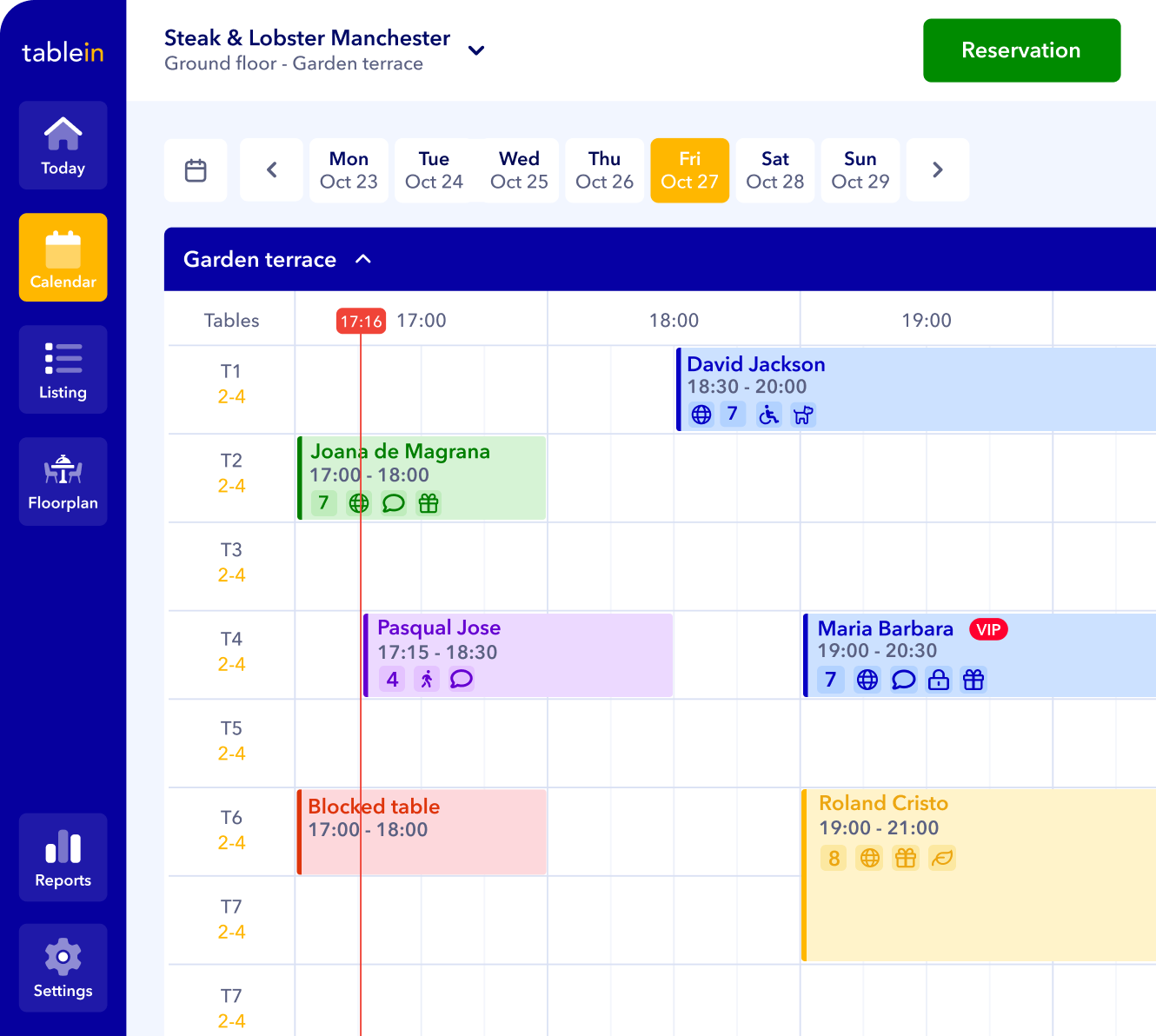
Source: Tablein
Each reservation shows up on a detailed daily reservation list, giving you a high-level view of everything you need to know for managing tables.
Over time, you can also use historical data and reporting features to better anticipate busier periods, which means being well-prepared, translating to improved service and higher customer satisfaction.
Demand forecasting allows for strategic staff scheduling and inventory preparation.
In essence, introducing online table bookings is not just about modernizing your restaurant reservation process but about unlocking new revenue streams and maximizing the efficiency of your service.
Build an Online Presence
Having online bookings is a significant step forward, but its effectiveness is limited if you don’t have an online presence where guests can discover your restaurant in the first place.
So, you need to start building your online presence through different channels. Where to start?
An essential element to start with is a well-designed website.
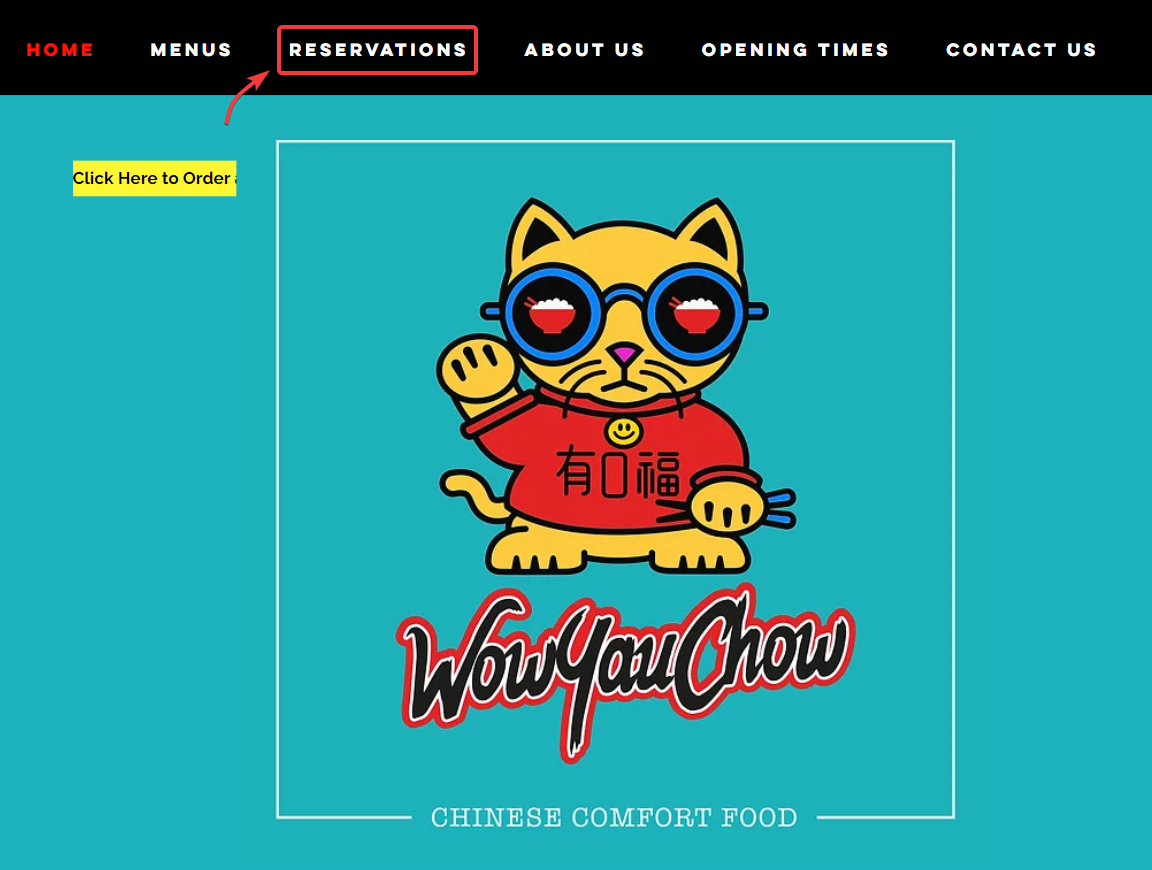
Source: WowYauChow
Consider the website shown above.
It's engaging and provides guests with easy access to essential information like menus, hours, and contact details.
Importantly, it features a prominent online reservation button, seamlessly directing customers to their booking widget.
Next, you need to establish a presence on social media platforms. For restaurants, the top contenders are:
- TikTok
Whether you use Instagram to show mouth-watering food photos, engage with your audience on TikTok, or promote special offers on Facebook, social media channels are a necessity to bring attention and more traffic to your establishment.
As a lesser-known tip for online presence, don’t overlook Google Maps either.
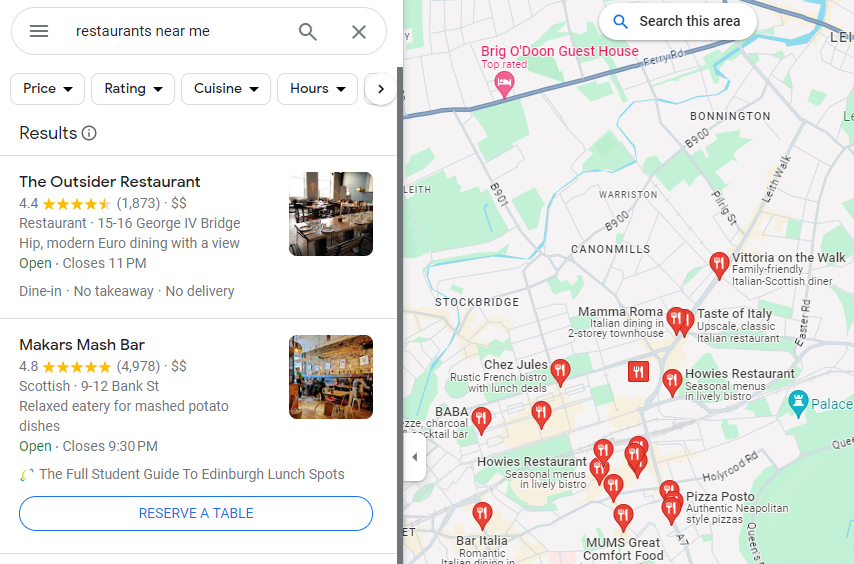
Source: Google
Many potential customers use Google Maps to find restaurants near them.
Having a strong presence there, and a good profile complete with photos, menus, and the ability to make reservations, can significantly increase your visibility.
Finally, consider listing your restaurant on popular review sites like the following:
- Yelp
- TripAdvisor
- Zomato
- Google Reviews
- OpenTable
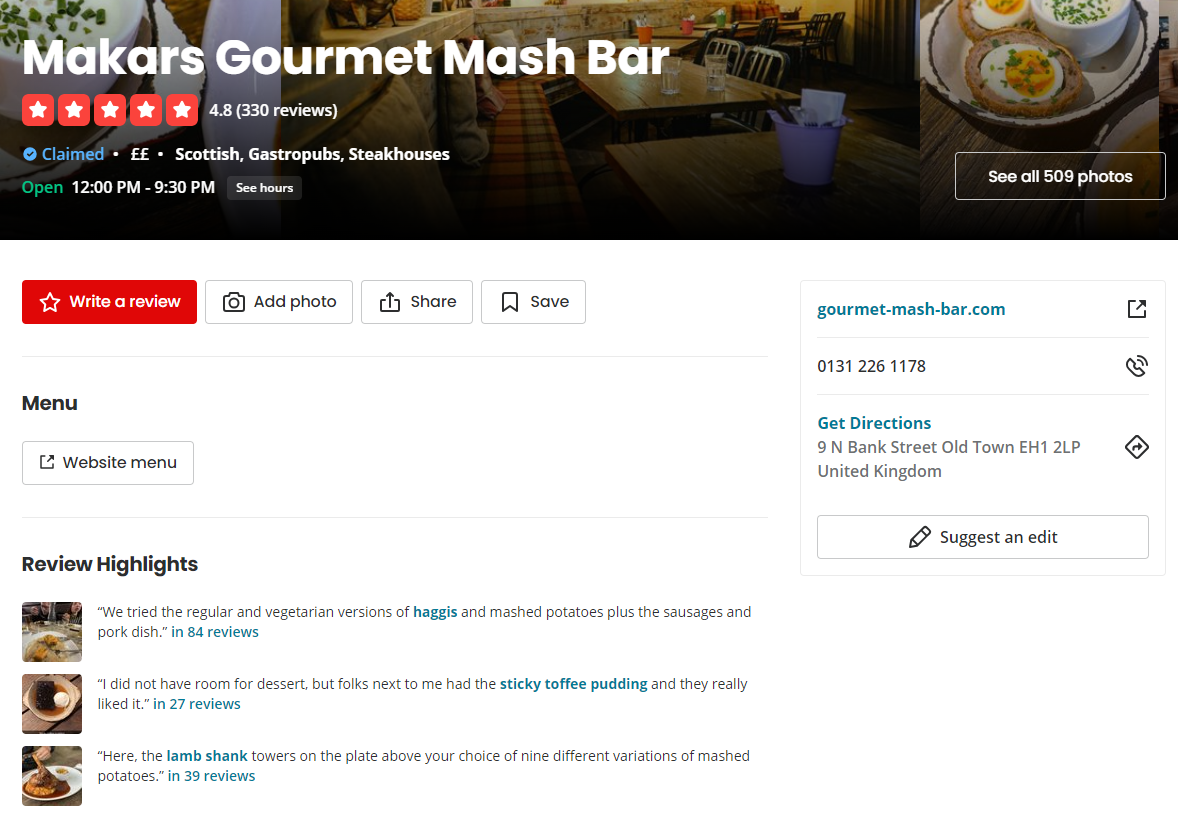
Source: Yelp
A review profile that is curated and managed well, like the one shown above, can help attract new customers through the power of positive endorsements and help you engage with guests, managing your restaurant’s reputation in the process.
As you can see, building a comprehensive online presence is vital.
It not only helps in getting your restaurant noticed but also in driving traffic to your online booking system, thereby increasing your reservations and overall revenue.
So, don’t overlook this essential part of revenue management in the digital age.
Regularly Update Your Menu
Now, let's talk about your restaurant's menu.
A great menu is often the first thing you'll showcase across your online channels, but we hope it’s not the same one you’ve been using for years.
After all, regular updates to your menu are crucial for effective revenue management, and we’ll explain why.
An updated menu doesn’t just mean adding new dishes but aligning your offerings with changing customer preferences, seasonal trends, and price shifts.
This strategy, known as menu engineering, is all about creating a menu that not only appeals to your customers but also maximizes your profits.
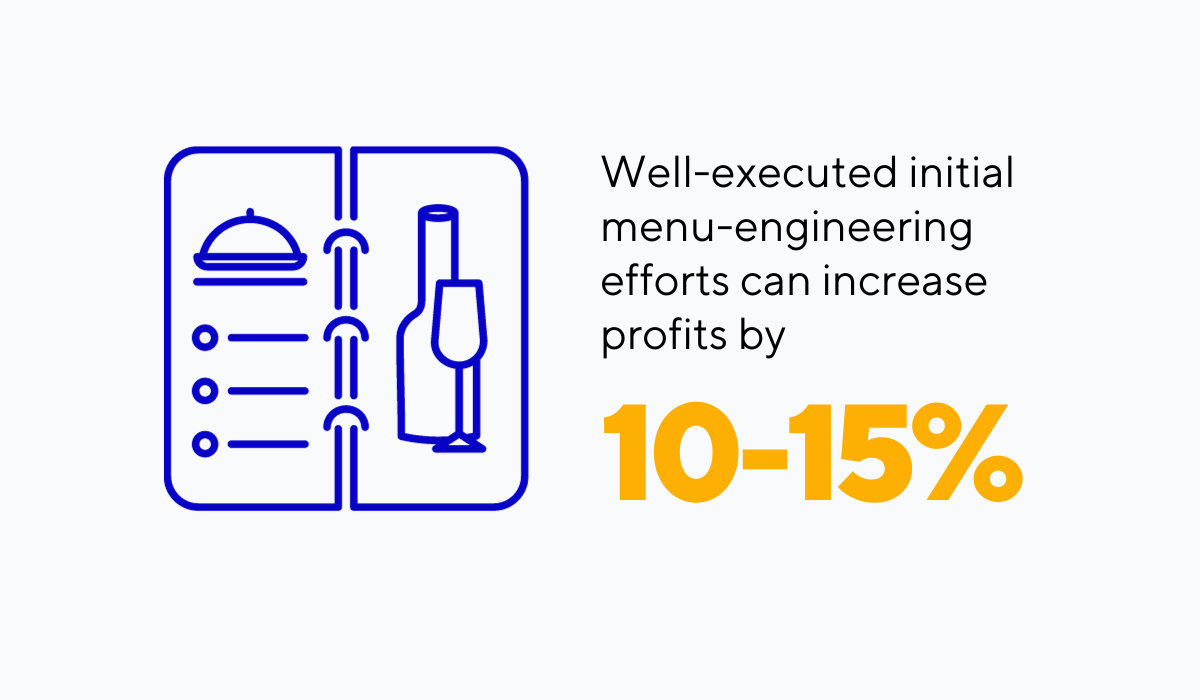
Illustration: Tablein / Source: Menu Cover Depot
This practice is nothing to scoff at, as the image above demonstrates how impactful menu engineering can be on your bottom line.
Okay, so how do you start the process?
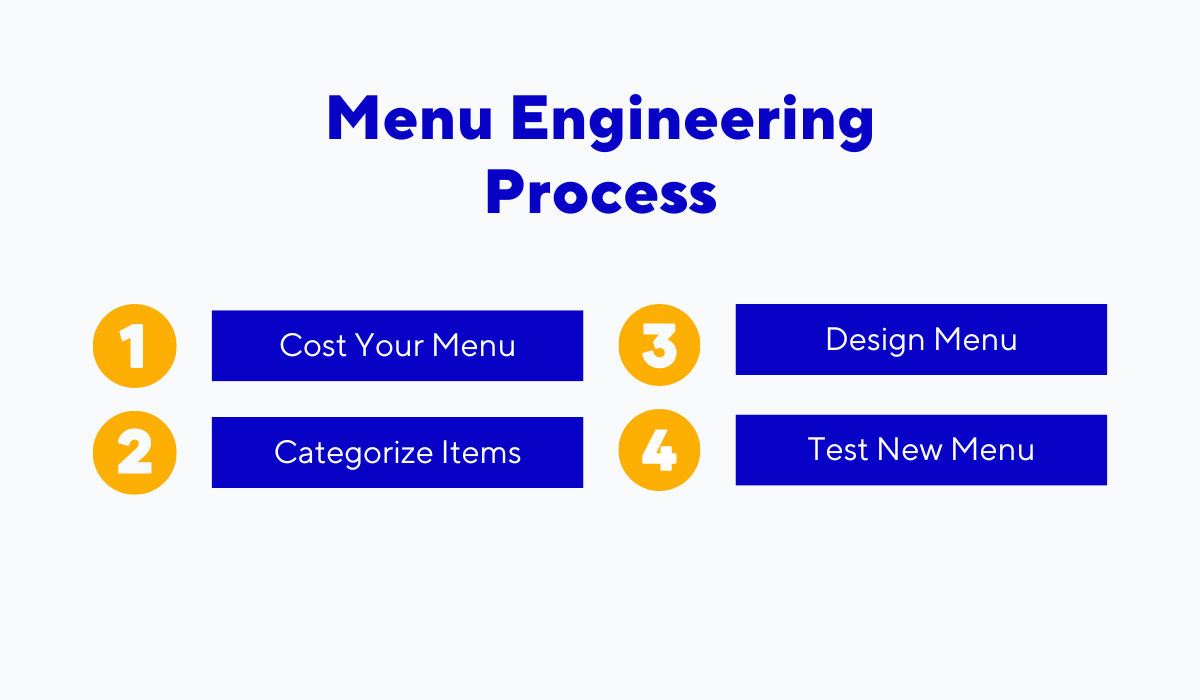
Source: Tablein
Firstly, you want to cost your menu. This means analyzing each dish in terms of the cost of ingredients and the labor involved in preparing it.
Why is this important?
Knowing the cost of each dish helps you price them correctly and ensure you get sufficient profits.
Next, you categorize your menu items.
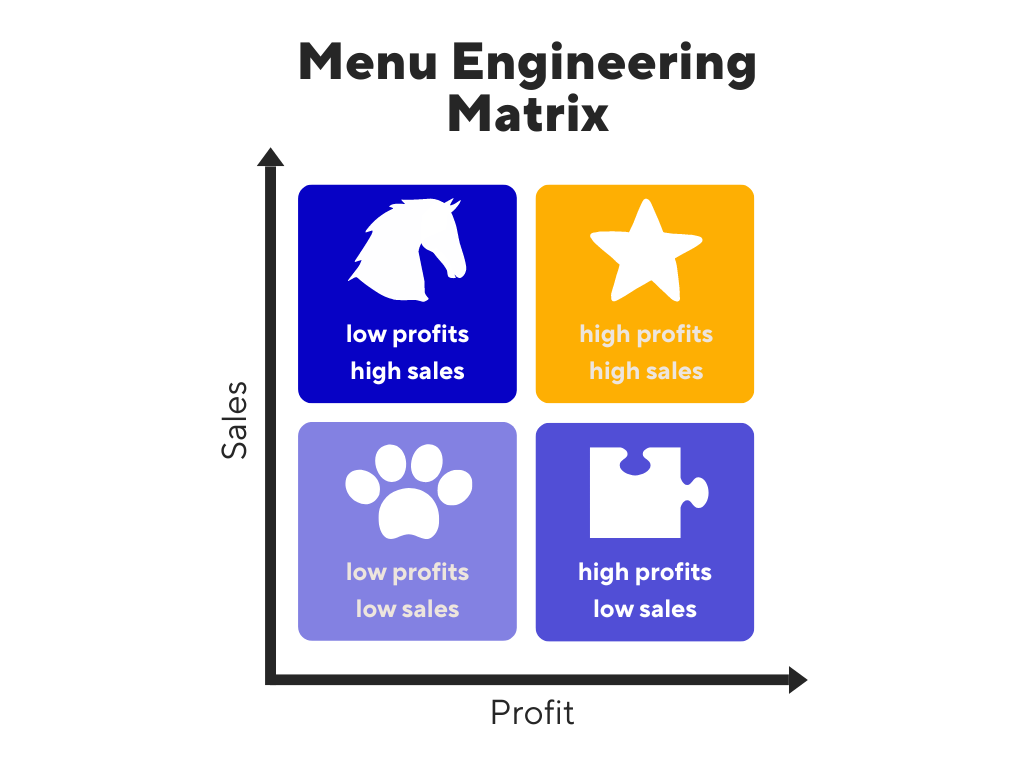
Source: Tablein
The menu engineering matrix, like the one shown above, is a handy tool here.
It helps you classify dishes based on their popularity, i.e. the number of sold items, and their profitability.
This classification enables you to make informed decisions about which dishes to promote, keep, tweak, or remove.
To have a closer look at the menu engineering matrix, read our article that goes a bit more in-depth into the four menu item categories.
In any case, your final focus should be on the design of your menu, which combines aesthetics and strategically placing items to draw attention to your most profitable dishes.
Once you’ve engineered your menu, test it out to see if it achieves the desired increase in revenue and profits and continue optimizing from there.
All in all, regularly updating your menu is a dynamic and essential strategy for revenue management, ensuring your offerings remain relevant, appealing, and profitable.
Implement Inventory Tracking
When it comes to managing your restaurant's revenue, don't overlook the importance of inventory tracking.
Properly managing your inventory is vital because it directly affects your costs and, consequently, your revenue.
This process starts with understanding what you have in stock, what you need, and when you need it.
Consider the inventory tracking table shown below.
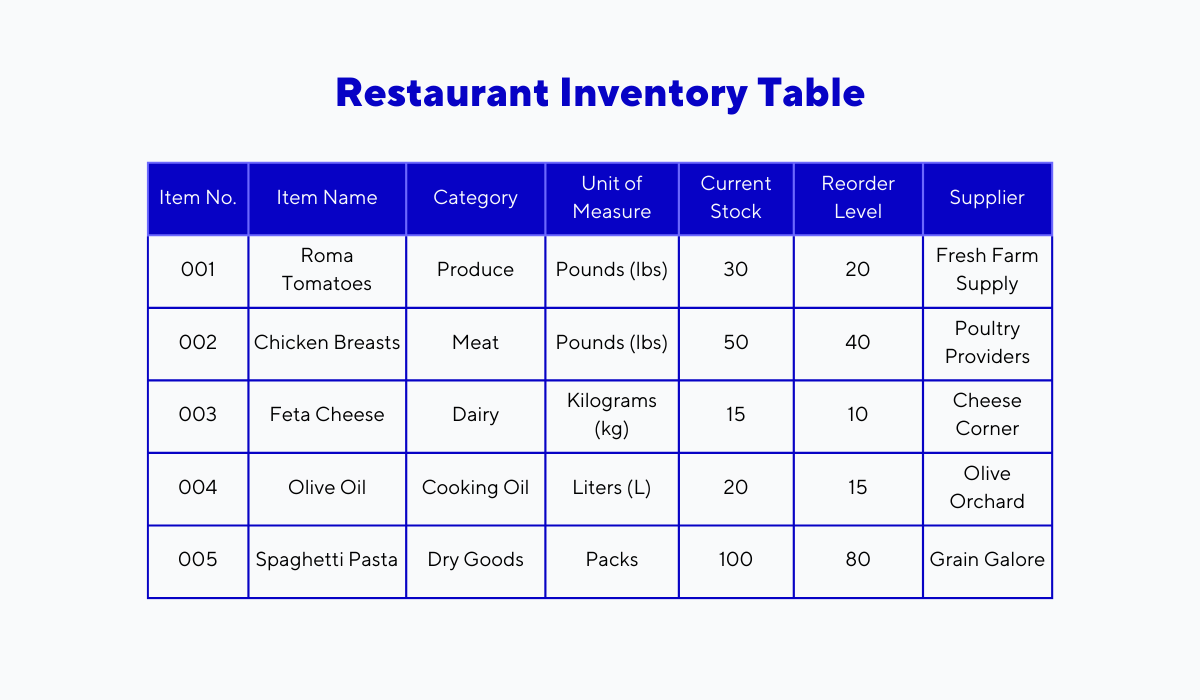
Source: Tablein
This table lists each item, its current stock levels, and reorder levels.
Knowing these details is crucial because it helps prevent both overstocking, which ties up your capital, and understocking, which can lead to missed sales opportunities.
By regularly monitoring your inventory, you'll begin to notice patterns and trends.
For example, you might find that certain ingredients are used more frequently during weekends or that some items are only popular during specific seasons.
Recognizing these patterns enables you to order more efficiently, reducing waste and saving money.
Eventually, you might even create a demand calendar based on your data.
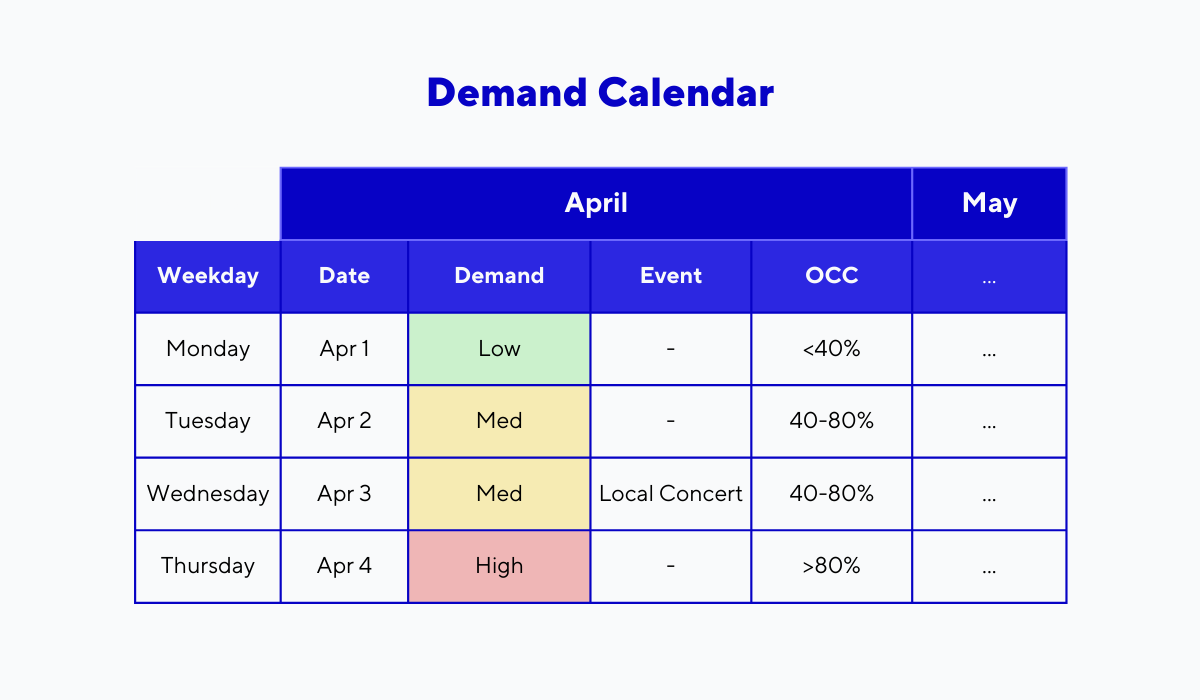
Source: Tablein
A demand calendar, like the one shown, forecasts demand variations throughout the different days of the month.
OCC here refers to "Occupancy Rate," indicating how busy your restaurant is expected to be (e.g., >80% means very busy, <40% means not so busy).
This foresight allows you to plan your inventory accordingly, ensuring you have the right amount of stock to meet customer demand without excessive wastage.
However, be mindful of special circumstances that can impact demand.

Source: Tablein
For instance, a local concert or a holiday like Thanksgiving can lead to a surge in demand.
If such events aren't accounted for in your demand calendar, you might find yourself running out of essential items, thereby missing out on potential revenue.
Overall, effective inventory tracking is a crucial component of restaurant revenue management.
It helps in optimizing stock levels, reducing waste, and ensuring that you are well-prepared to meet your customer's needs.
Improve Your Service Speed
Service speed is an essential aspect of your restaurant's operations. Efficient service means serving more customers, which naturally affects your revenue.
So, how do you improve service speed?
First, you need to understand which service metrics you want to track.
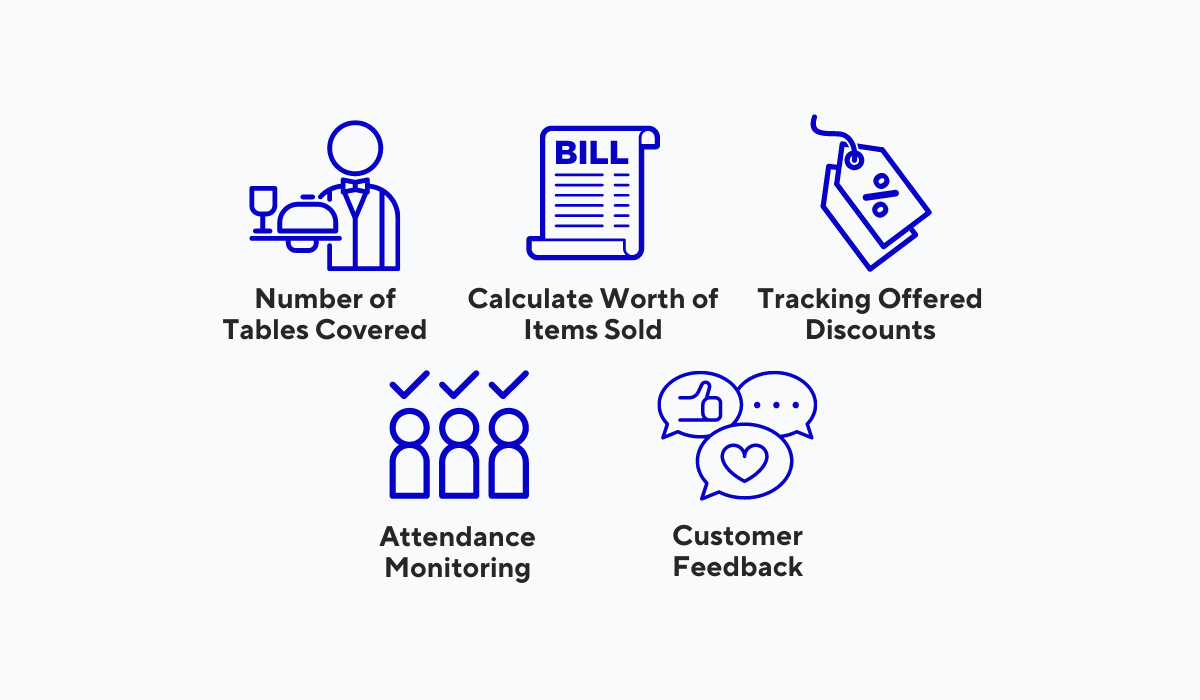
Illustration: Tablein / Data: Posist
For instance, you could use the metrics illustrated above for your front-of-house staff.
By tracking the number of tables served, the total value of items sold (indicating upselling skills), and customer feedback on service quality, you gain insights into your waitstaff’s efficiency.
You can use a similar set of metrics for your back-of-house staff as well.
After using one or a combination of metrics to evaluate your employees, you want to recognize and reward your most efficient staff members.
Their high performance should set a standard for others and can help foster a culture of excellence as these top performers can be instrumental in improving the skills of their less efficient peers.
The transfer of skills from more efficient to less efficient staff can be done through a mentorship program.
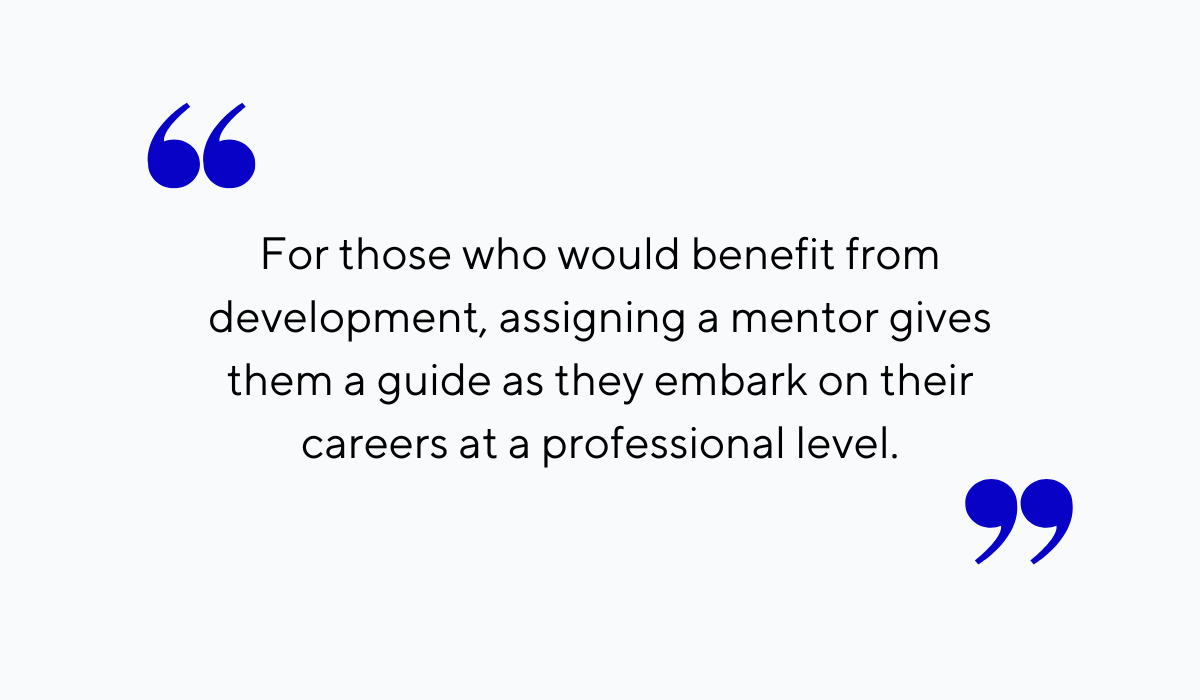
Illustration: Tablein / Quote: The Rail
Mentorship programs are a powerful tool for staff development when done correctly. The mentors can use a variety of techniques such as the ones illustrated below.
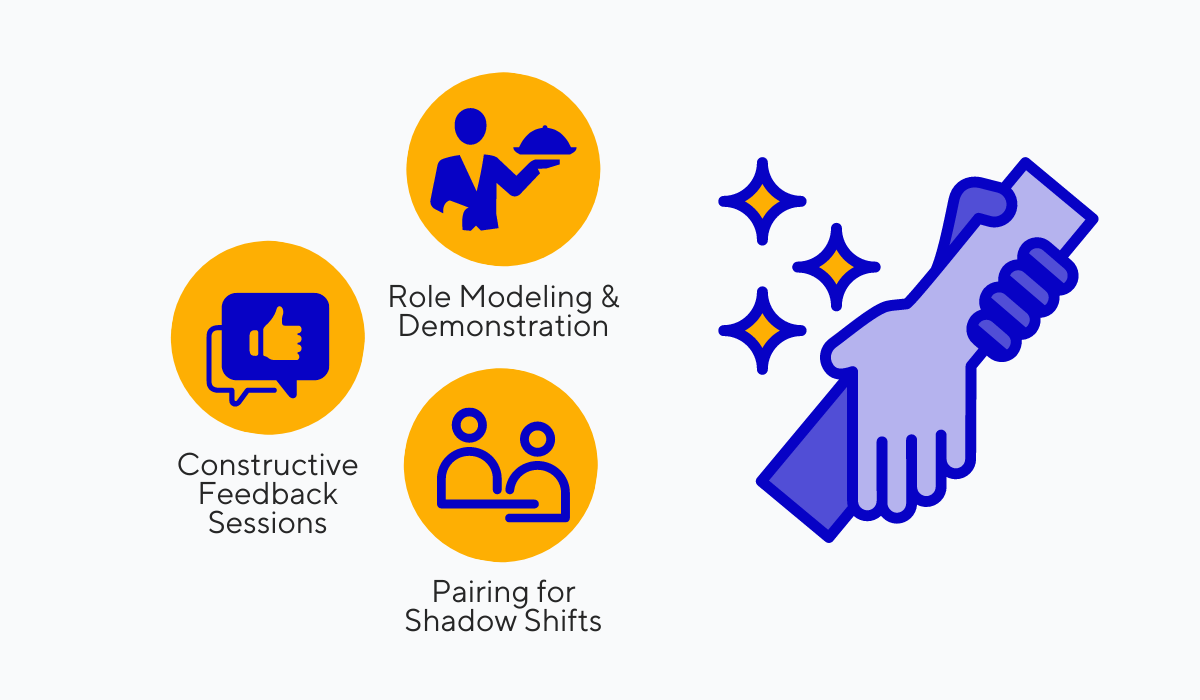
Source: Tablein
Role modeling and shadow shifts are practical mentorship techniques.
Mentors demonstrate best practices in real-time, while shadow shifts allow less experienced staff to observe and learn during actual service.
Moreover, open and constructive feedback from both the mentor and the mentee should be promoted throughout this process as it’s vital for continuous improvement.
In conclusion, by focusing on staff development and employing effective mentoring techniques, you can enhance service speed and get an increase in revenue as a result.
Optimize Your Labor Costs
Finally, let's address a significant component of your operational costs—labor.
While efficient staff contribute to increased revenue, the cost of labor itself needs careful management.
According to BDO data, labor costs in 2019 accounted for almost a third of total expenses across different food establishments.
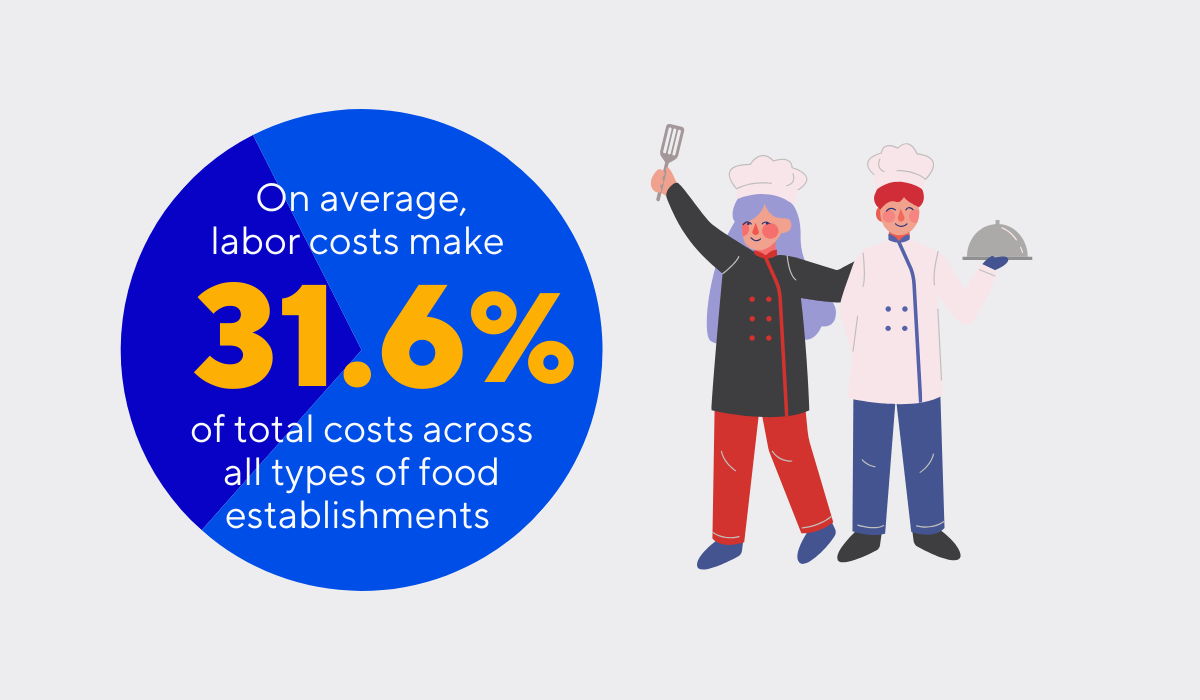
Illustration: Tablein / Data: BDO
This trend continued in 2023, underscoring the importance of optimizing labor costs for better revenue management.
The process starts with understanding your current labor costs.
Use the formula in the image below to calculate the percentage of labor costs out of your total restaurant sales.
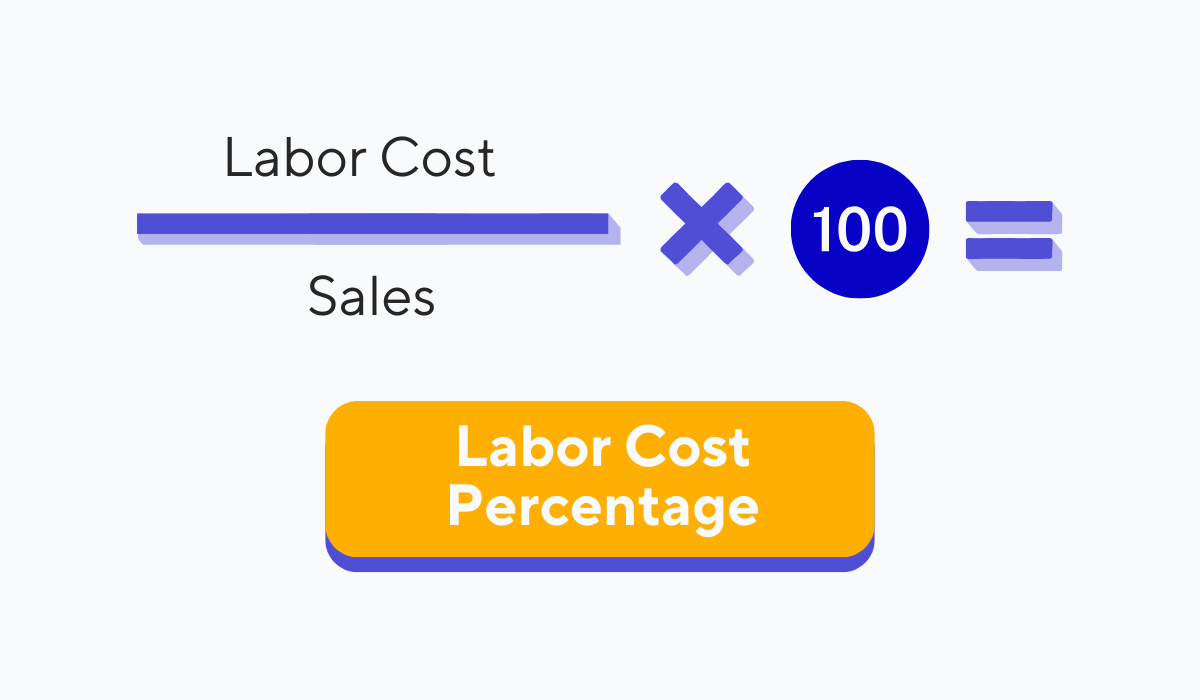
Source: Tablein
If your percentage aligns with or is lower than the industry average, you’re on the right track. However, if it's higher, it's time to investigate and implement changes.
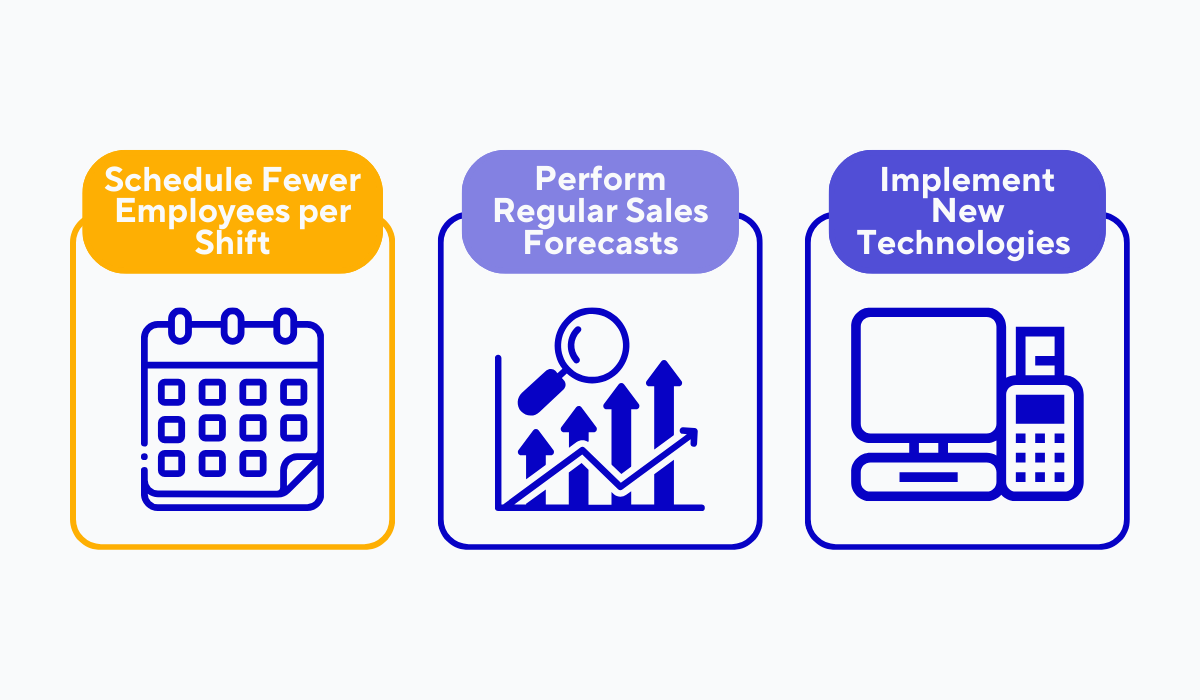
Source: Tablein
One common issue is overstaffing, where you have more staff on shift than needed, leading to unnecessary labor expenses. In this situation, consider scheduling fewer employees per shift.
If overstaffing stems from poor planning, enhance your scheduling process with regular sales forecasts, taking into account predicted customer volume in your staffing plan.
Another strategy is to leverage technology and automation to reduce labor costs.
For example, Point of Sale (POS) systems can expedite service, allowing your staff to handle more tables efficiently.
Even something as simple as a QR code menu can reduce the time staff spend taking orders, allowing them to focus on other aspects of service.
Overall, by analyzing your current labor expenses and making adjustments accordingly, you can maintain a healthy balance between service quality and operational costs.
Conclusion
And that’s a wrap on our guide to effective restaurant revenue management.
We covered everything from online table bookings to building an online presence, some menu engineering tips, and staff speed and scheduling.
These tips are all about making your restaurant more money and keeping costs in check.
Remember, in the restaurant world, managing your cash smartly can make all the difference. Use these strategies to stay ahead of the game and keep your business booming.
Put these ideas to work, and you'll see how they can make your restaurant not simply survive but really thrive.
Get a 30-day Exclusive Trial
As a Tablein blog reader, you’re eligible for an exclusive 30-day free trial to experience our simple reservation solution for your restaurant.
Enter your business email, and we’ll send you all the steps needed to create your account.
Share this
You may also like

5 Restaurant Sales Metrics You Need to Be Tracking

What You Need to Know About Restaurant Revenue Management
